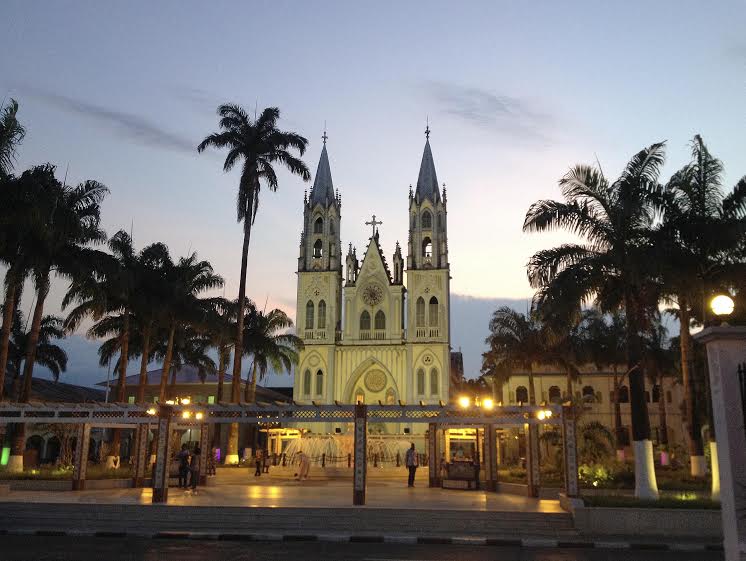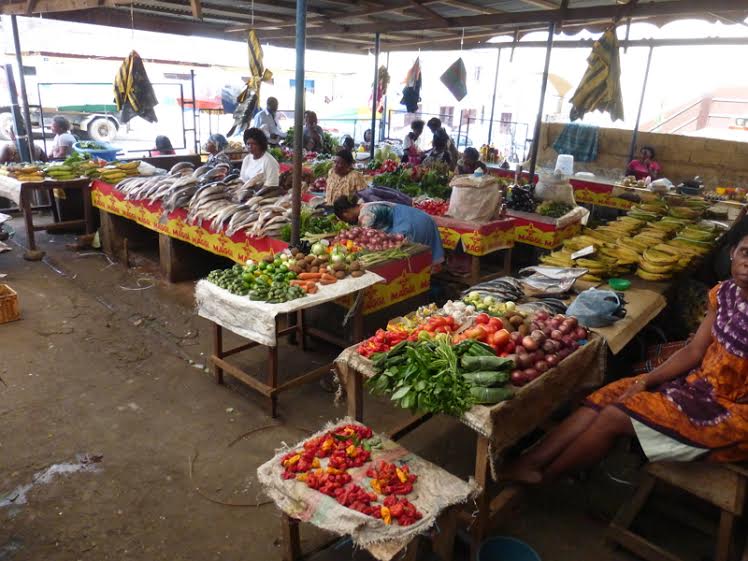by Oscar Scafidi
When you think about Spanish-speaking countries outside the mother country of Spain – well, it’s all about Latin America, right? The answer is: not quite. Tucked away on West Africa‘s Atlantic coastline, Equatorial Guinea is the only country on the entire continent to have Spanish as its official language (alongside local African languages such as Fang and Bubi).
How in the world did this come about? Well, to cut a very long story short, after being initially discovered by Portugal in the 1470s, a 1778 treaty ceded the island of Bioko to Spain, followed in 1900 by another treaty which granted it the enclave of Río Muni on the nearby mainland; these territories were consolidated as Spanish Guinea in 1926, and in 1968 they finally became an independent country as Guinea Ecuatorial.
Both Traditional & Reborn
Today, intimate-feeling Malabo (pop. 30,000) is located on the north coast of Bioko (though a new capital, called Oyala, is being built on the mainland). Formerly referred to as Santa Isabel during colonial times, Malabo perches on the rim of a volcanic crater along a still fairly wild coastline. The cityscape is a patchwork of Spanish colonial buildings (such as the neo-Gothic cathedral (top); typical informal dwellings; and shiny new commercial developments that are the fruit of the oil boom since the 1990s. Visitors to Malabo are likely to be surprised by its new attractive skyline and modern feel in some areas – although in others, dirt roads and that “developing-country” feel are still evident, and city planners continue to wage a constant battle to stop the jungle from encroaching.
It’s all a fascinating city (and country) waiting to be discovered. According to the United Nations, Equatorial Guinea is currently the world’s sixth least visited country by tourists in 2015. There are many reasons for this. Many people still have never heard of it – a legacy of a tumultuous post-colonial history, when the government of the day kept the country largely closed off to the outside world. And though this started to change when oil was discovered in the early 1990s, it remained very difficult to get entry visas.
Nowadays, though, as part of the government’s Horizon2020 development plan, they are keen to move away from purely oil dependence, and a key part of the economy they are focussing on is tourism. To this end, visa regulations and bureaucracy have been reduced, and an excellent tourist infrastructure of roads and hotels is being put in place. Adventure tour operators such as the UK’s Undiscovered Destinations can now easily obtain tourist visas, and are offering package tours of this incredible, remote nation. It’s been venturing out onto the world stage a bit, as well, as backdrop to two feature films this year. Where The Road Runs Out (trailer below) and Palmeras en la Nieve (Palm Trees in the Snow).
All that said, and while things are certainly moving in the right direction in terms of encouraging tourism, there’s still a long way to go, and Equatorial Guinea remains very much a frontier tourism destination; my research for the first ever guidebook to this country for the UK-based Bradt Travel Guides, for example, was certainly not easy. Upon entry, you still need to obtain a tourism permit, and getting around is a logistical challenge given the lack of public transport.
Malabo Culture & Colonial Architecture
However, EG is a very small country with roads so good they will amaze you, so it only takes a few hours to drive the length of the mainland, and even less time from the north to the south of Bioko island. Malabo itself is so small that it’s fairly easy to explore on foot. There’s plenty of interesting colonial architecture of the 19th and early 20 century, such as the Santa Isabel Cathedral on Calle de Kenia (top), built 1897-1916 with none other than the legendary Antoni Gaudí as a consultant, as well as the distinctive Casa Verde (Calle de Kenia at Avenida del 3 de Agosto). The “Green House” was prefabricated in Belgium in the early 19 century and served as the consulate of Portugal; now renovated, it will soon be home to a museum of the city.
For now, you can enjoy a museum on local culture (as well as live performances) at 1the Equatoguinean Cultural Centre. The Spanish Cultural Centre as well as the French Cultural Centre also which showcase local talent as well as that of their respective home nations. Those wishing to take home a gift for family back home can visit Bioko’s only bookshop, La Casa Tomada, or perhaps visit one of the open air markets for traditional carved goods and colourful fabrics (you can even purchase some cloth and take it into Square Style: La Mode Africaine tailors and have it made into a shirt, suit, dress, or waistcoat).
Hotel options are also pretty good these days, from the the budget Internet Hostal up to the luxurious Sofitel Malabo Sipopo Le Golf. Things are even more varied on the Malabo dining front, from excellent local cuisine at restaurants like La Luna (try the pepe-sup, a delicious if rather spicy fish soup) to international fare from Spain (of course), but also France, Italy, Lebanon, Senegal, Cuba, even Japan.
Excursions from Malabo
For those interested in local flora, at this writing a botanical garden was expected to open imminently. For those who want to see the real thing in situ – along with wildlife, beaches, and small towns including more quaint colonial architecture – have a raft of day trips available to them. For example, Ángel Vañó at Ruta 47 can organise excursions to spots such as Rebola, 20 minutes away, where you can visit a cultural centre and see cocoa being processed in the traditional way (there’s another interesting cocoa farm to visiot south of Malabo in Sampaka). The beaches of Sipopo are impressive, and for ecotourism enthusiasts, there are hikes in the Luba Crater Scientific Reserve, 50 kilometres (30 miles) away, home to some of the rarest primates on the planet, organised through the Bioko Biodiversity Protection Program, which has a visitor centre and base at Moka. Down on the on the south coast, the black volcanic beaches of Ureca might reveal sea turtles nesting!
Furthermore, getting here is easier than ever, as well including Iberia service five to seven days per week, depending on time of year. Flights from the U.K., from the USA.
Stay tuned for more from me on one of the world’s undiscovered travel frontiers, Equatorial Guinea. In the meantime, learn a bit more at Visit-Malabo.com and a lot more from my new book the Bradt Guide to Equatorial Guinea.
Author of the new Bradt Guide to Equatorial Guinea, Anglo-Italian teacher and travel writer Oscar Scafidi focusses on challenging destinations such as Afghanistan, East Timor, Liberia, and Somalia; his next project is kayaking Angola’s River Kwanza. Some of Oscar’s work can be found at PolosBastards.com; follow him on Twitter at @BradtEGGuide.
photos | Ruta 47



